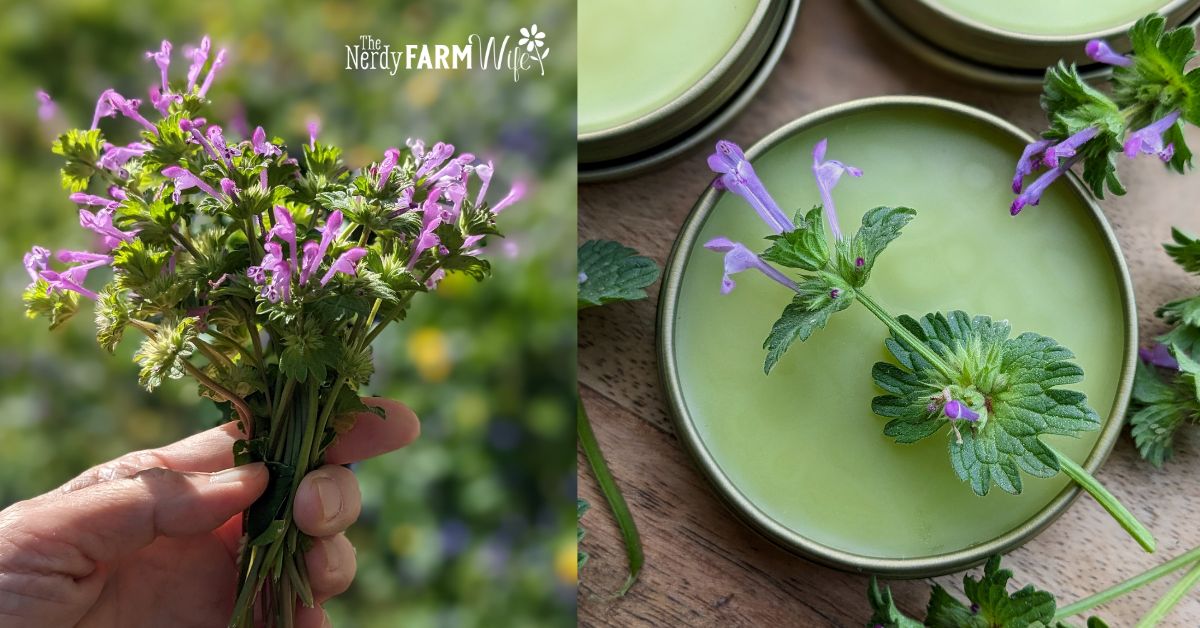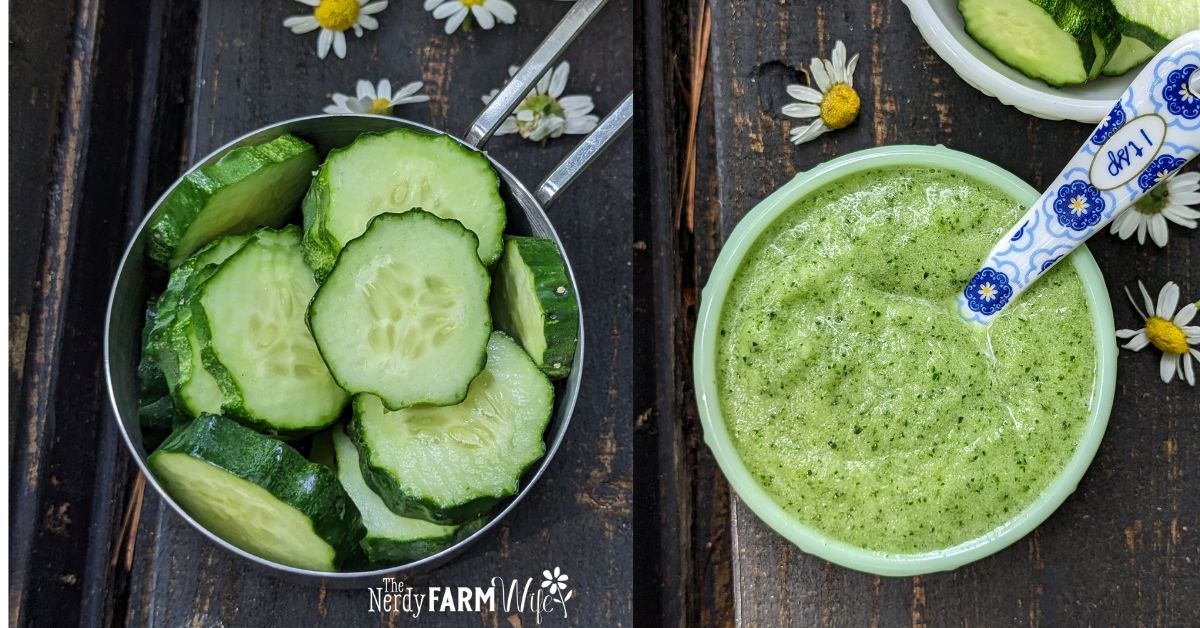You don’t usually see henbit turned into salve, but its more famous cousin, purple dead nettle (Lamium purpureum) is wonderful in pain salves, and they share overlapping compounds, so I decided to try making henbit salve to see how it would work.
I’ve been using this salve for about nine months now and love the results, so thought I’d share the recipe with you here! 🙂

You’ll need to do the following things to make henbit salve:
1. Forage some henbit from your yard, and then dry it. I have a foraging article in the works for this site, but until then, you can check out ID tips in this Henbit vs Purple Dead Nettle post I wrote over at Unruly Gardening.
2. Infuse the henbit into oil, along with any other herbs you’d like to add. (See below, for suggestions.)
3. Melt the oil together with some beeswax and a pinch of ginger*. If you’d like, you can add some essential oil for extra “oomph”. (Directions below.)
That’s it!
*My “secret” addition to henbit salve is a generous pinch of ground ginger. (The same ground ginger found in your spice cabinet.)
Ginger increases circulation to the applied area and adds warmth, which is what makes my particular knee pain feel better.

Make the Henbit Infused Oil
When making your infusion, you have lots of oil choices. Popular ones include olive and sunflower, though they can feel a bit heavy on your skin, and be slow to absorb.
Rice bran or sweet almond oil absorb a little faster, and make nice feeling salves. You could also add a splash of an extra-light oil that soaks in fast, like fractionated coconut oil or jojoba oil, to lighten the whole salve up.
First, you’ll need to fill a small (8-ounce) jar with chopped, freshly dried henbit – flowers, stems, and leaves.
Then you’ll cover with oil and infuse the slow way, or the fast way.
See my article How to Make Herbs Infused Oils (FAQS & Tips) if you need detailed directions.
OPTIONAL TIP: For a richer, green-colored oil and salve, add a splash of 100 proof or higher vodka to the dried henbit leaves, stir them to evenly dampen, then add the oil for infusing. The alcohol will extract colors and components from the dried herbs, that the oil alone cannot.
Instead of just using henbit, you may also want to combine it with other herbs that are good for aches and pains, such as goldenrod, dandelion flowers, arnica, or comfrey.




